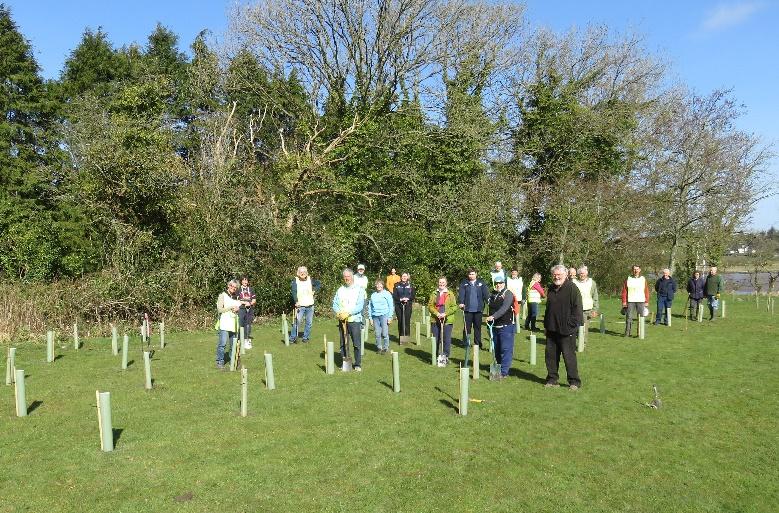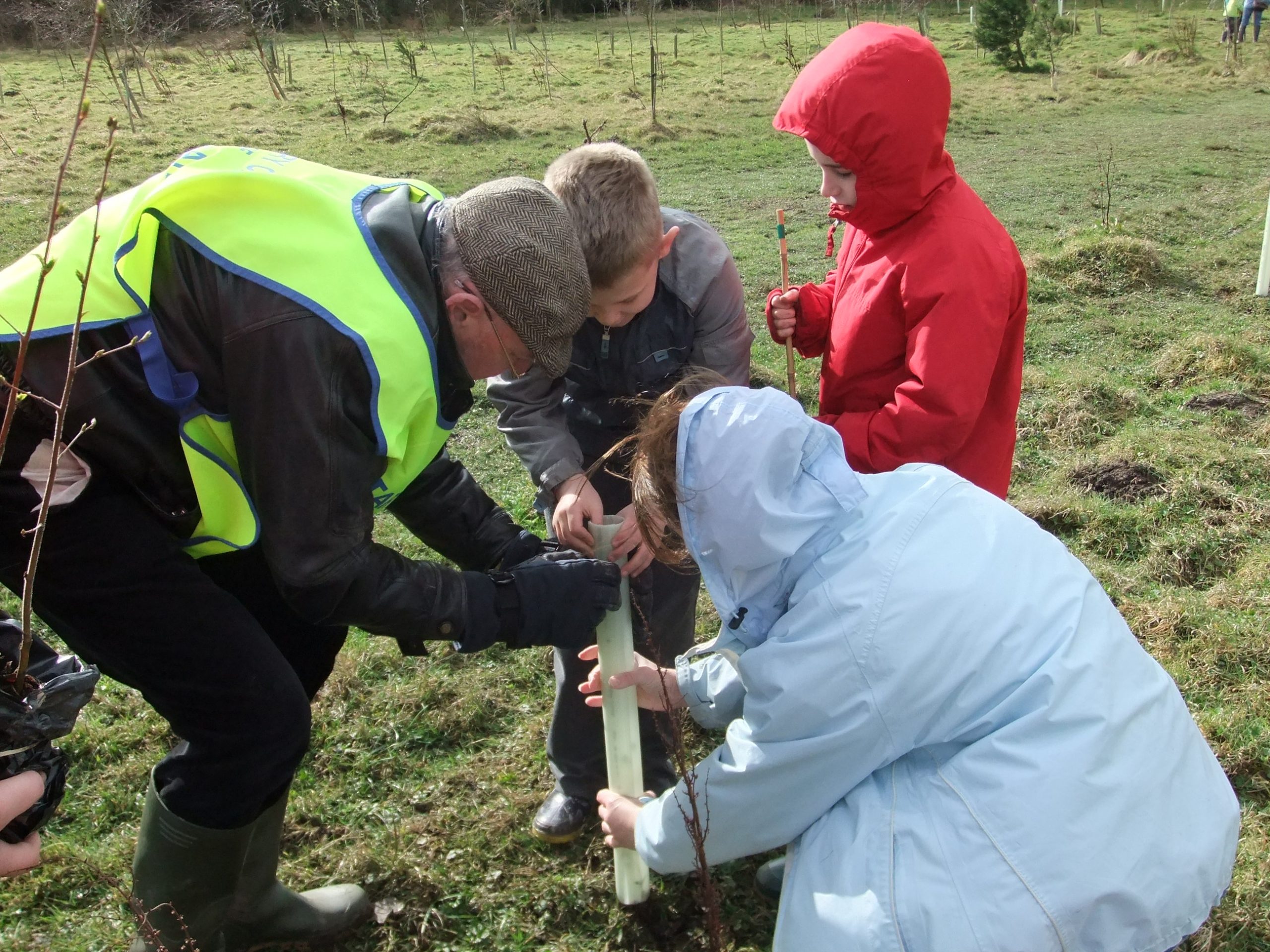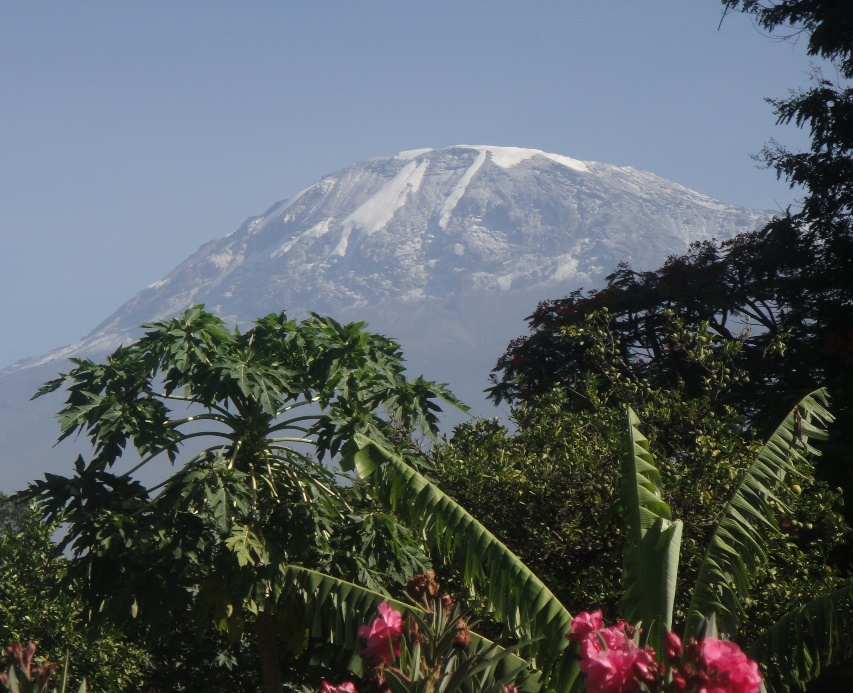A PROGRAMME BEING DEVELOPED BY RGBI ESRAG
There are several issues concerning trees, carbon capture and climate mitigation. For example, what are the best species to plant? This depends very much on site conditions, but there is general agreement that single species ‘monocultural’ plantations of exotic species [eg. spruce] are not such good carbon sinks as mature broad-leaved woods of native species. This matter is complicated by the fact that exotic conifers usually grow much faster than our native species. Furthermore, in northern locations deep peat can store more carbon than trees growing on such peat. A consequence of this is that some recent schemes [eg. the Langholm Initiative, for details see https://langholminitiative.org.uk, include peatland restoration as well as tree-planting and natural regeneration of native woodland in their programme.
Perhaps the most important aspect to remember about tree-planting for carbon capture is that, even if tree-planting is the cheapest and most effective method of removing carbon from the atmosphere, such efforts will be in vain if humanity continues to emit unsustainable quantities of greenhouse gases. Our first actions in face of climate change should be to reduce our individual and collective carbon footprint. Nevertheless, we invite all rotarians to continue to plant trees and let the ESRAG team know of your work as we prepare for the COP26 summit in Glasgow this November.




Here are two photos of Kibo summit on Kilimanjaro, Tanzania. The photo on the left was taken in April 1973 and shows glacial ice covering most of the upper cone. The photo on the right was taken in 2012 and shows the same upper slopes beyond the trees in the foreground. By 2012 the two glaciers flowing from the summit has almost entirely disappeared, and it was estimated that more than 90% of the ice originally surveyed 100 years earlier had melted. It is now anticipated that Kilimanjaro’s iconic cap of ice will have vanished by 2030 because of a combination of global warming & regional drying. There are now concerted efforts to maintain atmospheric moisture in this area by reforestation, and all the Rotary clubs around Kilimanjaro have regular tree- planting projects in the hope of limiting disastrous climate change.
There are several issues concerning trees, carbon capture and climate mitigation. For example, what are the best species to plant? This depends very much on site conditions, but there is general agreement that single species ‘monocultural’ plantations of exotic species [eg. spruce] are not such good carbon sinks as mature broad-leaved woods of native species. This matter is complicated by the fact that exotic conifers usually grow much faster than our native species. Furthermore, in northern locations deep peat can store more carbon than trees growing on such peat. A consequence of this is that some recent schemes [eg. the Langholm Initiative, for details see https://langholminitiative.org.uk include peatland restoration as well as tree-planting and natural regeneration of native woodland in their programme. Perhaps the most important aspect to remember about tree-planting for carbon capture is that, even if tree-planting is the cheapest and most effective method of removing carbon from the atmosphere,
such efforts will be in vain if humanity continues to emit unsustainable quantities of greenhouse gases. Our first actions in face of climate change should be to reduce our individual and collective carbon footprint. Nevertheless, we invite all rotarians to continue to plant trees and let the ESRAG team know of your work as we prepare for the COP26 summit in Glasgow this November.
Paul Keeley
ESRAG UK Chapter member.
Contact: [email protected]
HOW TO GET STARTED WITH TREE PLANTING
As an individual
Plant trees in your garden, get involved in community projects nearby or support larger projects elsewhere.
One of the easiest things to do is to use the Ecosia search engine when browsing the internet. Every search generates funds for tree planting projects around the world. It’s a no brainer it costs you nothing Ecosia – the search engine that plants trees
With a small-scale club led project
Many clubs have carried out local tree and other planting projects working with local community groups, local authorities schools and businesses. Projects can include small scale woodland, community gardens or orchards, sensory gardens, landscaping or streetscaping.
With other clubs or at district level
By co-operating with other local clubs or at District level it may be possible to deliver a large scale project or a series of smaller ones which will deliver more benefits than an isolated project. A District may wish to set a target for clubs in the area.
Support existing tree planting projects either in the UK or internationally
There are several projects which are either Rotary led or involve Rotarians which deliver tree planting in developing countries to achieve a mix of environmental, economic and community objectives.
Encourage schools and youth groups to engage in tree planting
Engaging young people serves an educational purpose in explaining the importance of trees to the environment and enhances the visibility of Rotary in the community.
DOs and DON’Ts of TREE PLANTING
DO work with the local community to ensure that the trees are wanted and will be looked after
DO consult with the local council, Parish Council and any other statutory body which may have an interest
DO take expert advice to ensure that the trees and any other planting are appropriate in terms of climate, soil type, any existing planting in the vicinity, maintenance requirements.
DO consider the size of the trees when fully grown and take account of the relationship of the trees to any nearby buildings and the potential effect on any underground utility services nearby,
DO ensure that there are no other constraints such as potential archaeological remains or any specific environmental significance
DO consider the size of the trees when they are mature and
DO ensure that you have appropriate well maintained equipment for planting and tree protection.
DO make sure that there is a deliverable plan to maintain the planting at least until it is well established and for as long as necessary.
DO monitor the condition of the trees regularly during the first year and take appropriate action.
DO carry out a risk assessment before carrying out the project, ensure that appropriate public liability insurance is in place and ensure that where necessary DBS requirements are met when working with young people
DON’T consider that the project is complete when the trees have been planted
RESOURCES
Sources of trees
The Woodland Trust – provides free trees for planting projects in the form of small bare rooted whips which need to be planted in the winter months. There are different packs of trees for different types pf planting along and their website also has detailed advice Free Trees for Schools and Communities – Woodland Trust
Local Authorities – many local authorities have tree nurseries and work with community groups on tree planting projects. They may also be able to advise on the location and type of planting and any approvals necessary.
The Tree Council – Offers grants and support to schools to plant trees. It also invites donations towards tree planting.
The Tree Council | Working together for the love of trees
Grants
The Rotary Foundation – grants may be available from the Rotary Foundation towards tree planting where it is clear that the project contributes to a long-term strategy rather than a small stand alone project.
Speakers
There are several speakers who are available to give talks to Rotary Clubs relating to tree planting:
Paul Keeley – Director of Sustainable Global Gardens is available to speak about SGG and the value of tree planting in a tropical environment. [email protected]
Maya Smeulders – can speak on eco-friendly ovens. While not a tree planting project this reduces the requirement for wood fuel by 75% which will reduce deforestation and at the same time have health benefits by reducing exposure to smoke from open fires.
Smartphone App.
See www.treekly.org
